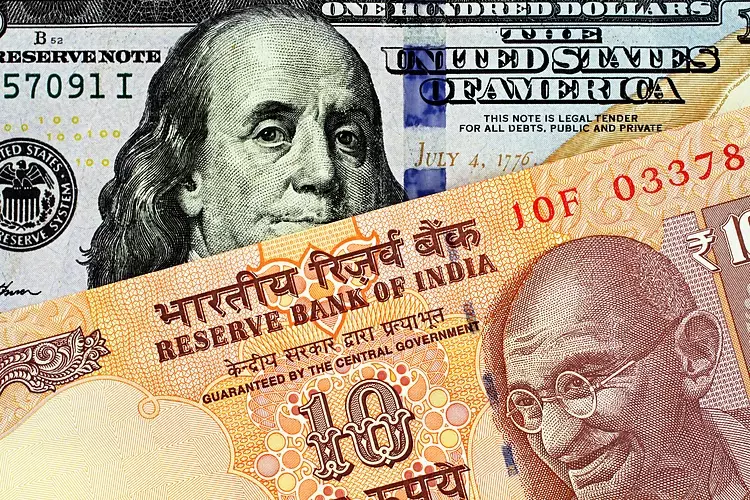In Tuesday’s early Asian session, the Indian Rupee weakened due to month-end USD demand and higher crude oil prices. Traders are closely watching the US August CB’s Consumer Confidence ahead of key events later in the week. Anuj Choudhary, Research Analyst at Sharekhan by BNP Paribas, predicts that the rupee will trade with a slight positive bias, influenced by dovish Fed speak and expectations of a rate cut in September. However, geopolitical tensions in the Middle East and rising crude oil prices may limit any sharp upside movement.
Data suggests that India’s economic growth likely slowed in the April-June quarter due to lower government spending. San Francisco Fed President Mary Daly hinted at a quarter-percentage point reduction in borrowing costs, while Richmond Fed President Thomas Barkin indicated a cautious approach to rate cuts. The US Durable Goods Orders saw a substantial increase in July, exceeding market expectations and marking the most significant gain since May 2020. Futures are currently indicating a near 40% likelihood of a half-percentage point cut in interest rates.
The USD/INR pair has a positive outlook above the key 100-day Exponential Moving Average (EMA) on the daily chart. However, the price broke below a three-month-old uptrend line, and the 14-day Relative Strength Index (RSI) suggests further consolidation. The 84.00 psychological level acts as an immediate upside barrier, with targets set at 84.24 and 84.50. On the downside, support is found at 83.77, with a potential drop to the 100-day EMA at 83.57.
The Indian Rupee is highly sensitive to external factors such as crude oil prices, the value of the US Dollar, and foreign investment levels. The Reserve Bank of India (RBI) intervenes in forex markets to maintain stability and adjusts interest rates to target inflation. Factors like inflation, interest rates, GDP growth, balance of trade, and foreign investment inflows all impact the Rupee’s value. Higher growth rates attract more overseas investment, strengthening the Rupee. A less negative balance of trade also contributes to a stronger Rupee. Real interest rates and risk-on market environments encourage inflows of foreign investment, benefiting the Rupee. However, higher inflation can weaken the Rupee due to oversupply issues and increased import costs. Inflation may lead to RBI raising interest rates, which can ultimately be positive for the Rupee.
By analyzing market conditions, economic indicators, technical analysis, and influencing factors, traders and investors can gain a comprehensive understanding of the Indian Rupee’s current situation and potential future movements. It is crucial to monitor both domestic and international developments to make informed decisions when trading the INR.

